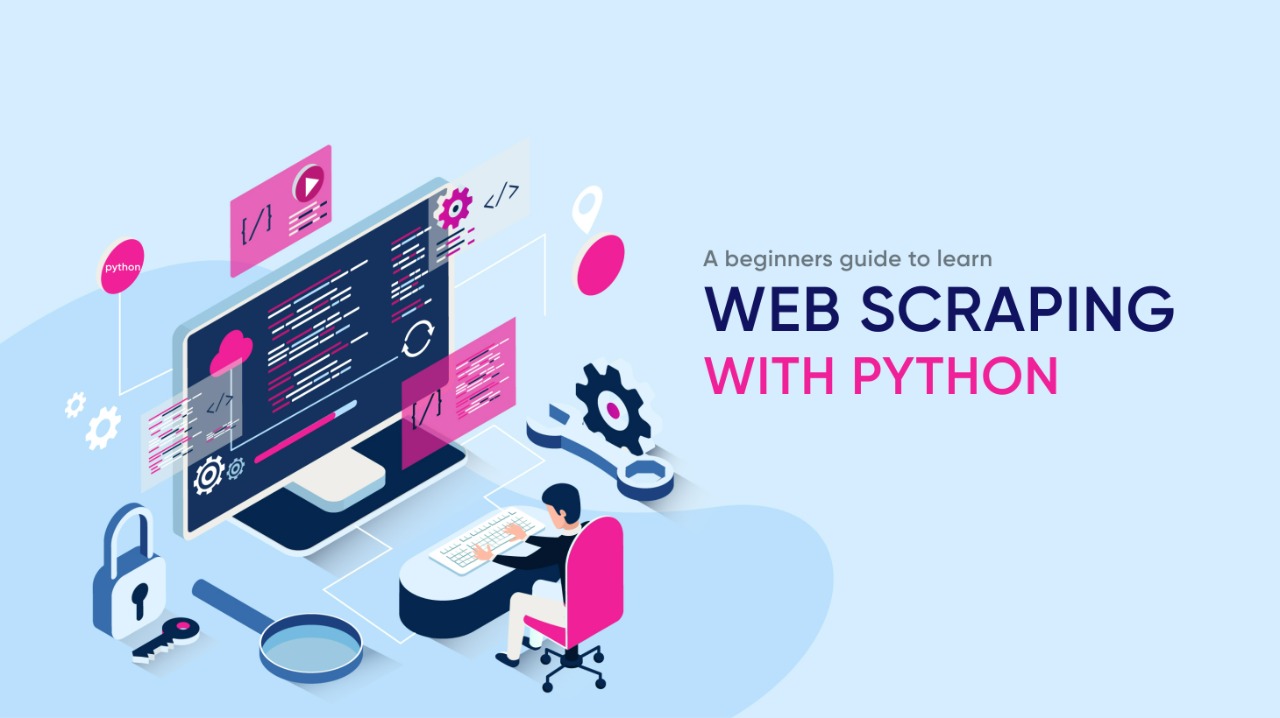Python is one of the most widely used and versatile programming languages available. It's often deployed across many industries and used for web development, machine learning, and data science. A Python development company makes the best outcome from coding.
Due to its widespread use, particularly in such in-demand (and interrelated) fields as machine learning and big data, it's not surprising that Python has surpassed Java as the top programming language.
Web Scrapping
Web scraping is a website extraction technique that pulls vital information from it. Software programs that scrape the web usually simulate human exploration of the web by either implementing low-level Hypertext Transfer Protocol (HTTP) or embedding a full-fledged web browser, such as Internet Explorer, Google Chrome, or Mozilla Firefox.
For example, Beautiful Soup (bs4, the most up-to-date version) is a Python library for extracting data from HTML and XML files. It works with your favourite parser to provide ways to navigate, search, and modify the parse tree. Because of its capabilities, it helps programmers eliminate the amount of work they need to complete manually.
Python for Webscrapping
Web scraping is an automatic method of obtaining large amounts of data from websites. Most of this data is unstructured in an HTML format, which is then converted into structured data in a spreadsheet or a database to be used in various applications. Why is Python Good for Web Scraping? Python is the most popular language for web scraping as it can handle most processes easily. It also has a variety of libraries that were created specifically for web scraping.
Scrapy is a prevalent open-source web crawling framework that is written in Python. It is ideal for web scraping as well as extracting data using APIs. Beautiful Soup is another Python library that is highly suitable for web scraping.
It creates a parse tree that can be used to extract data from HTML on a website. Beautiful Soup also has multiple features for navigation, searching, and modifying these parse trees. Web scraping with Python will become relatively more straightforward with Beautiful Soup.
Need for Web Scrapping
Today, more and more businesses publish data on the internet. This information includes the product, customer, pricing, and supplier details. For example, companies in the telemarketing industry scrape this data from websites for competitive intelligence and strategic positioning purposes.
Whether or not companies are doing this legally is another question, as these activities are difficult to track—especially when you throw machine learning and AI into the mix.
Applications of Web Scrapping
Web scraping has multiple applications across various industries.
Price Monitoring
Companies can use Web scraping to scrape the product data for their products and competing products to see how it impacts their pricing strategies. Companies can use this data to fix the optimal pricing for their products to obtain maximum revenue.
News Monitoring
Web scraping of news sites can provide a company with detailed reports on the current news. This is even more essential for companies that are frequently in the transmission or depend on daily news for their day-to-day functioning. After all, news reports can make or break a company in a single day!
Market Research
Web scraping can be used for market research by companies. High-quality web-scraped data obtained in large volumes can be beneficial for companies in analyzing consumer trends and understanding which direction they should move in the future.
Email Marketing
Companies can also use Web scraping for email marketing. They can collect Email IDs from various sites using web scraping and then send bulk promotional and marketing emails to all the people owning these Email ID.
Sentiment Analysis
If companies want to understand the general sentiment for their products among their consumers, then sentiment analysis is necessary. Companies can use web scraping to collect data from social media websites such as Facebook and Twitter regarding the general sentiment about their products. This will help them create people's desired products and move ahead of their competition.
Steps in Web Scraping Using Python
1. Finding the URL that you want to scrape
2. Inspecting of the Page
3. Identifying the data you want to extract
4. Write the code
5. Run the code and extract the data
6. Store the data in the required format
Here is a Beginner's guide to learn web scraping with Python! Before learning how to scrape a website, it's good to know more about its structure, which is necessary to extract relevant information. A lot of information is contained in the URL you are going to scrape, and understanding how URLs work will make the scraping process much more manageable.
Libraries Required for Web Scraping Python
There are several libraries available in Python to perform a single function. In this guide, we will be using two different Python modules for scraping data:
1. Urllib2: A Python module that can be used to fetch URLs.
2. Beautiful Soup: Beautiful Soup is a Python package that pulls information from web pages. It creates parse trees that help extract data efficiently.
Beautiful Soup enables us to navigate through data present on the web page. Let's try some commands to see how it works.
soup..string
BeautifulSoup will take HTML or XML content and transform it into a complex tree of objects. Here are several common object types that we will use.
1. BeautifulSoup—the parsed content
2. Tag—a standard HTML tag, the main type of bs4 element you will encounter
3. NavigableString—a string of text within a tag
4. Comment—a special type of NavigableString
There is more to consider when we look at requests.get() output. I've only used page.text() to translate the requested page into something readable, but there are other output types:
1. page.text() for text (most common)
2. page.content() for byte-by-byte output
3. page.json() for JSON objects
4. page.raw() for the raw socket response (no thank you)
Data Extraction
Extraction during web scraping can be a daunting process filled with missteps. The best way to approach this is to start with one representative example and then scale up (this principle is true for any programming task). Viewing the page's HTML source code is essential. There are several ways to do this.
You can view the entire source code of a page using Python in your terminal (not recommended). Run this code at your own risk:
print(soup.prettify())
While printing out the entire source code for a page might work for a toy example shown in some tutorials, most modern websites have a massive amount of content on any one of their pages. The 404 page will likely be filled with code for headers, footers, etc.
Putting Our Web Scraper Together
First, you need to extract information from the DataFrame. You need to iterate through each row(tr), assign each tr(td) element to a variable, and add it to the list.

















Post Comments